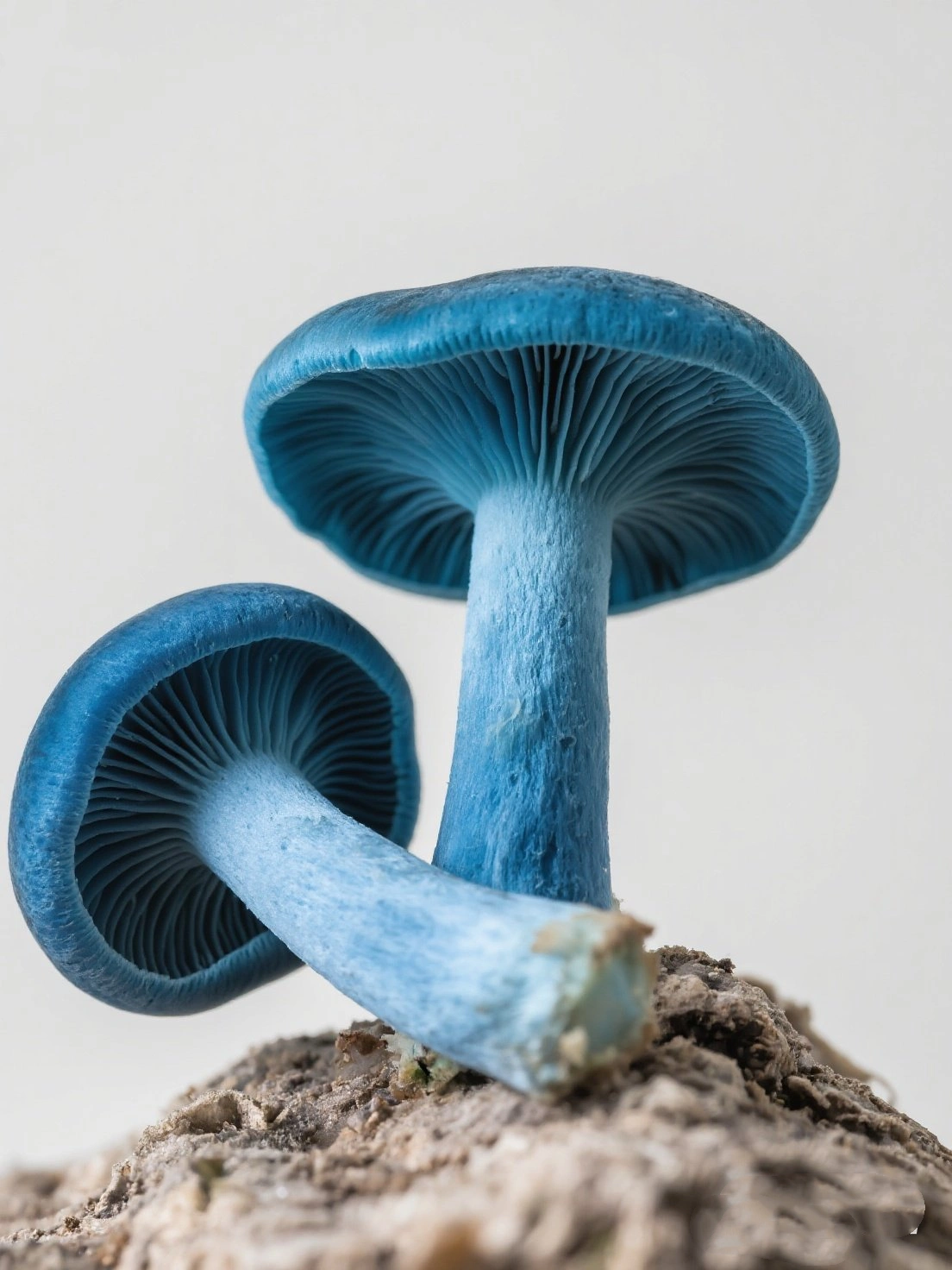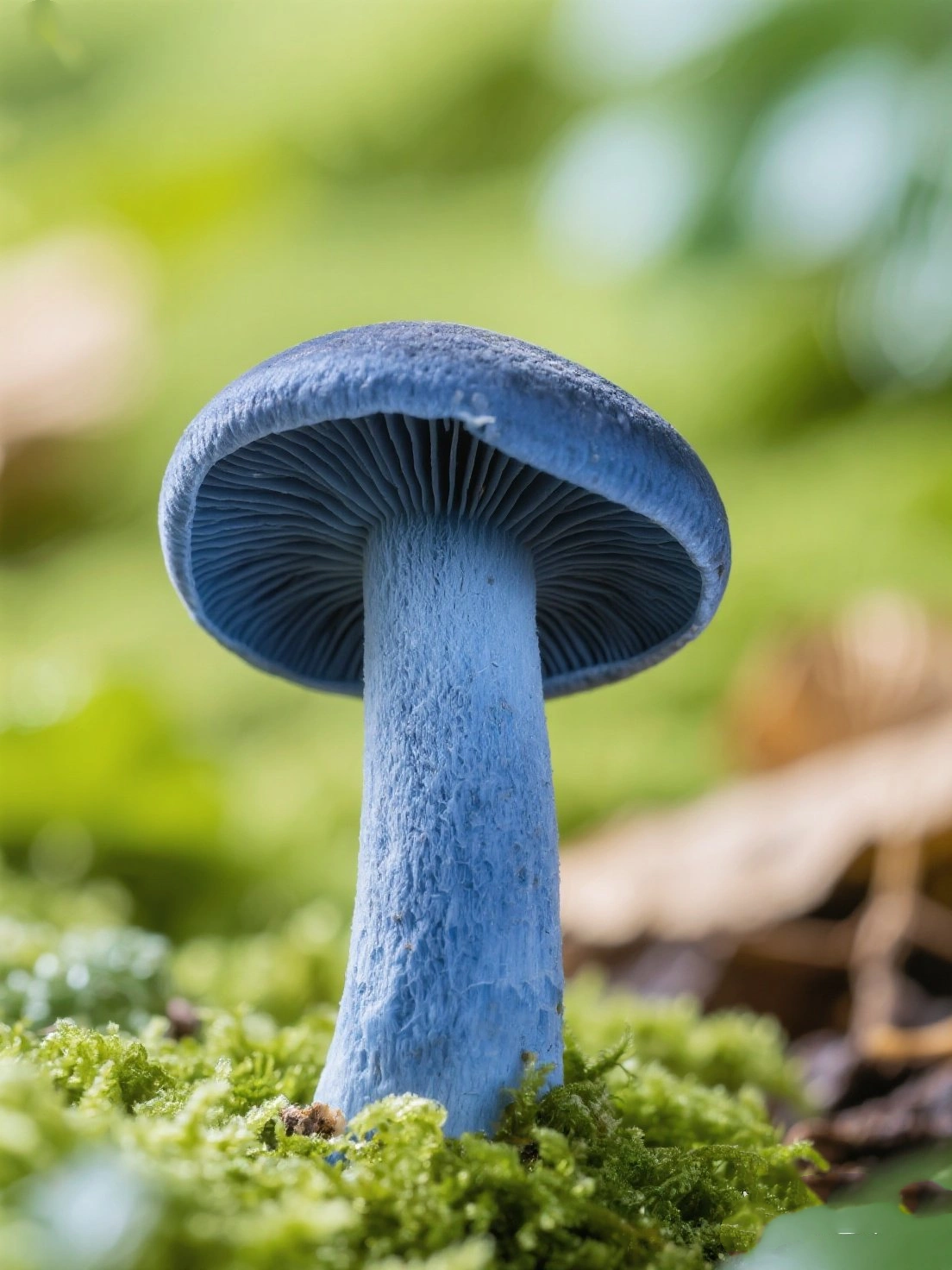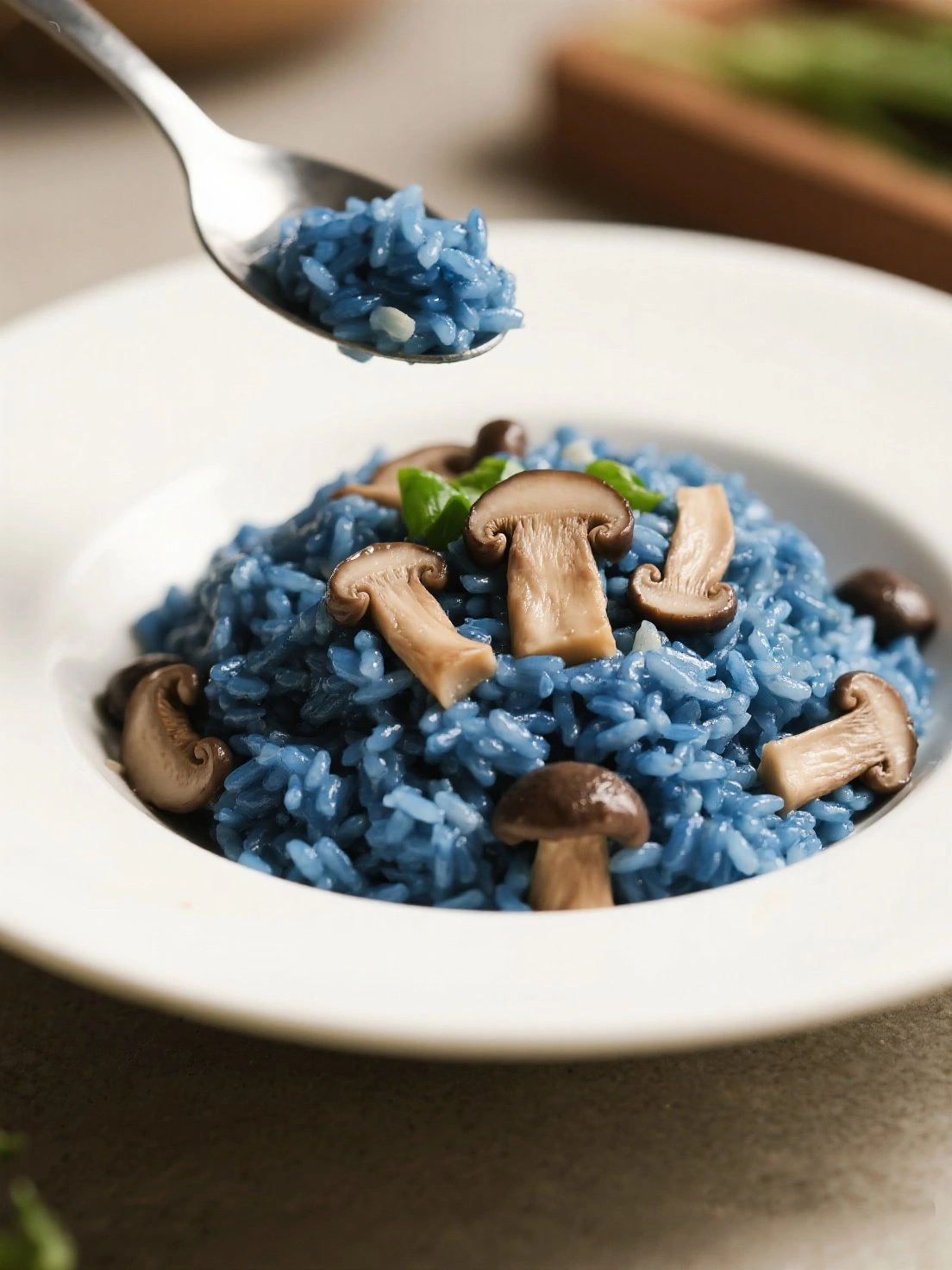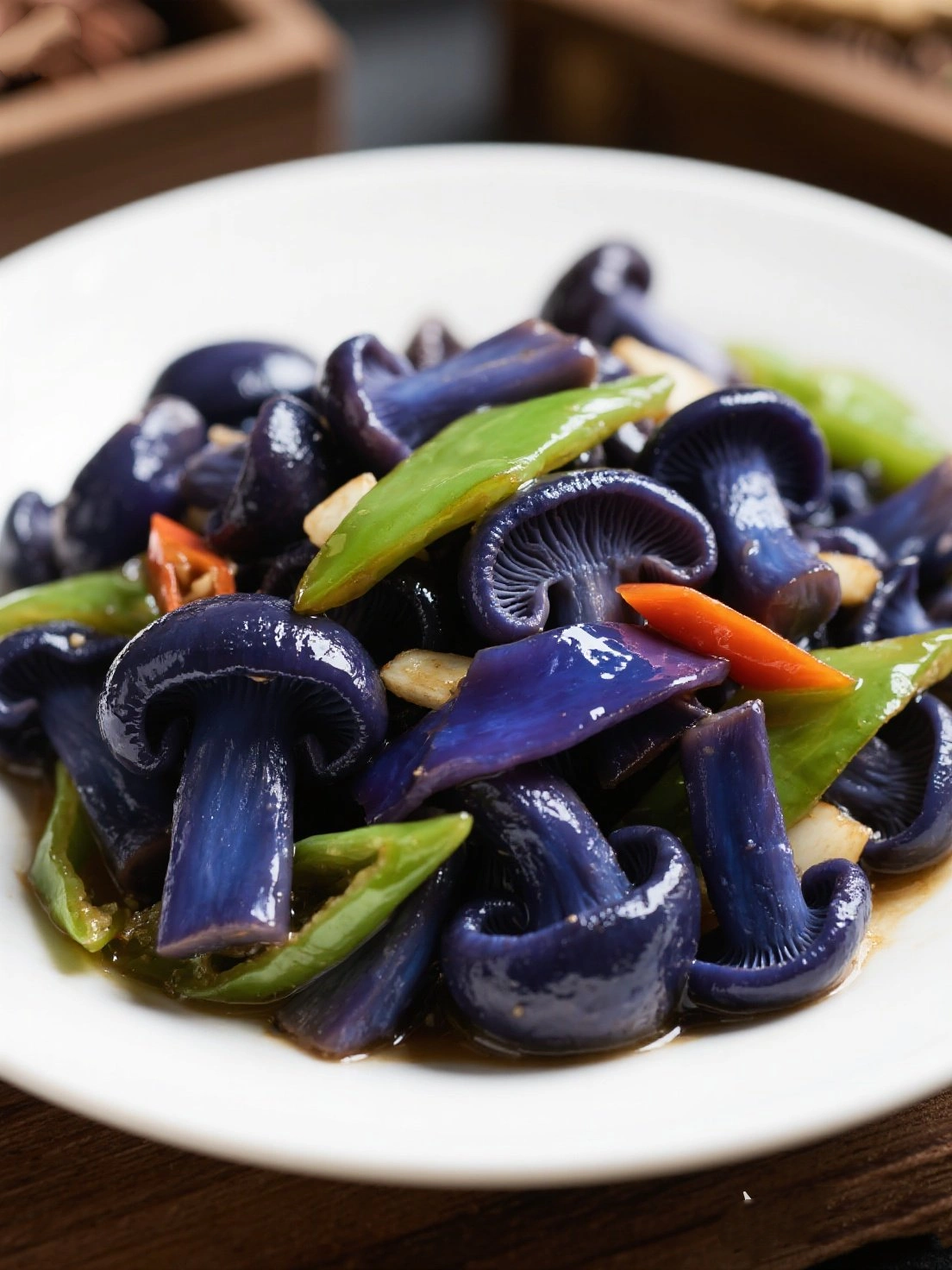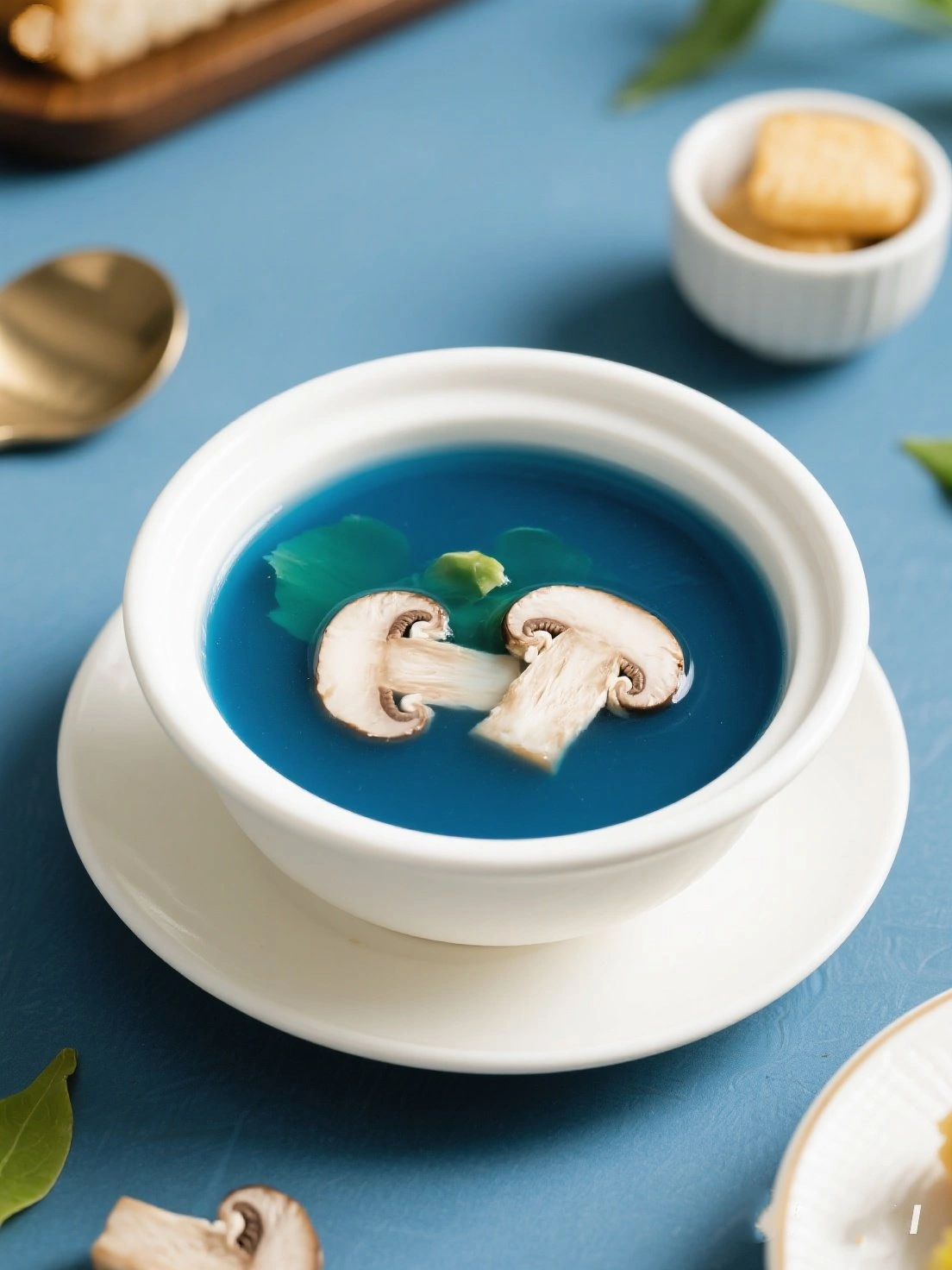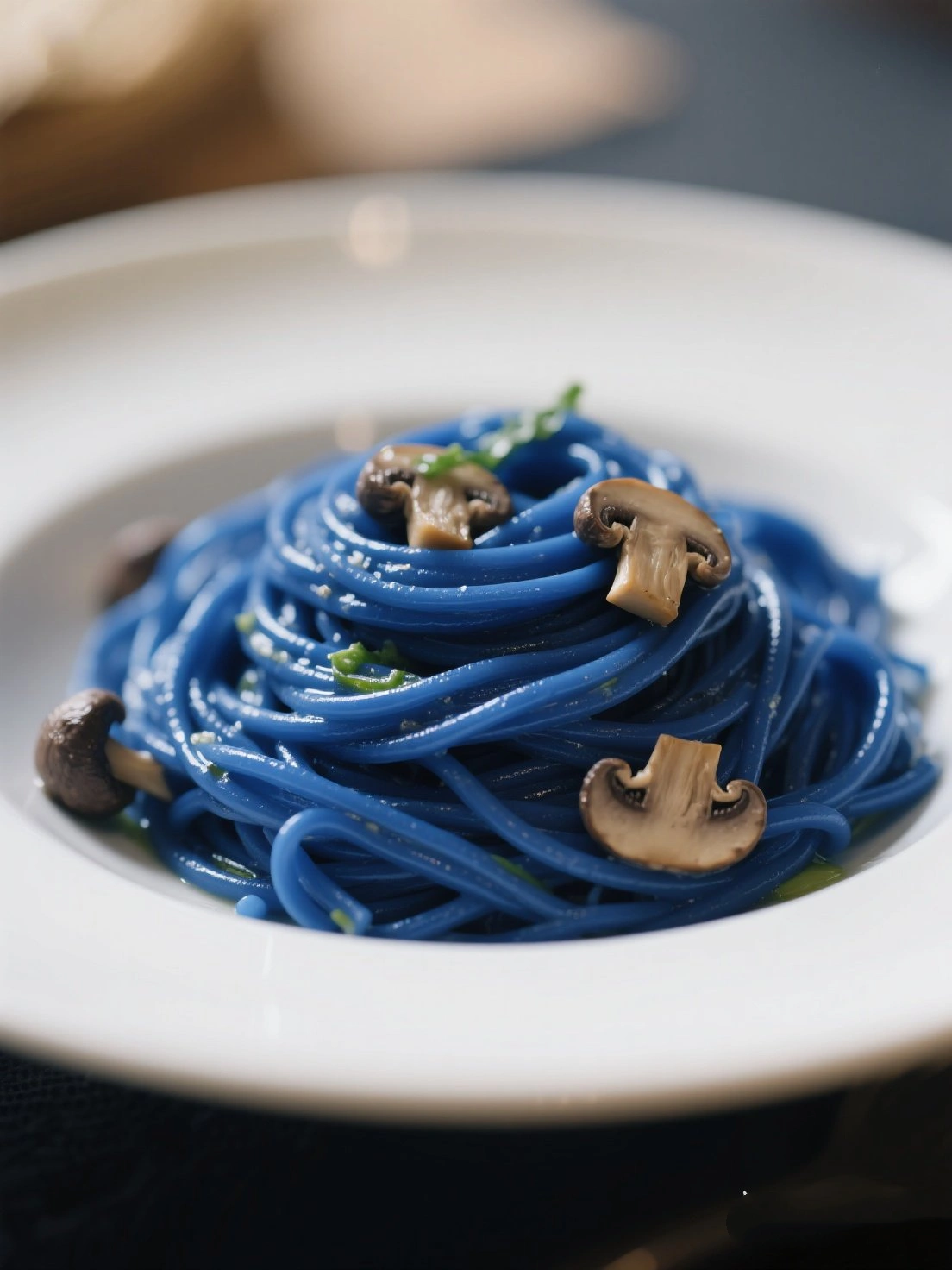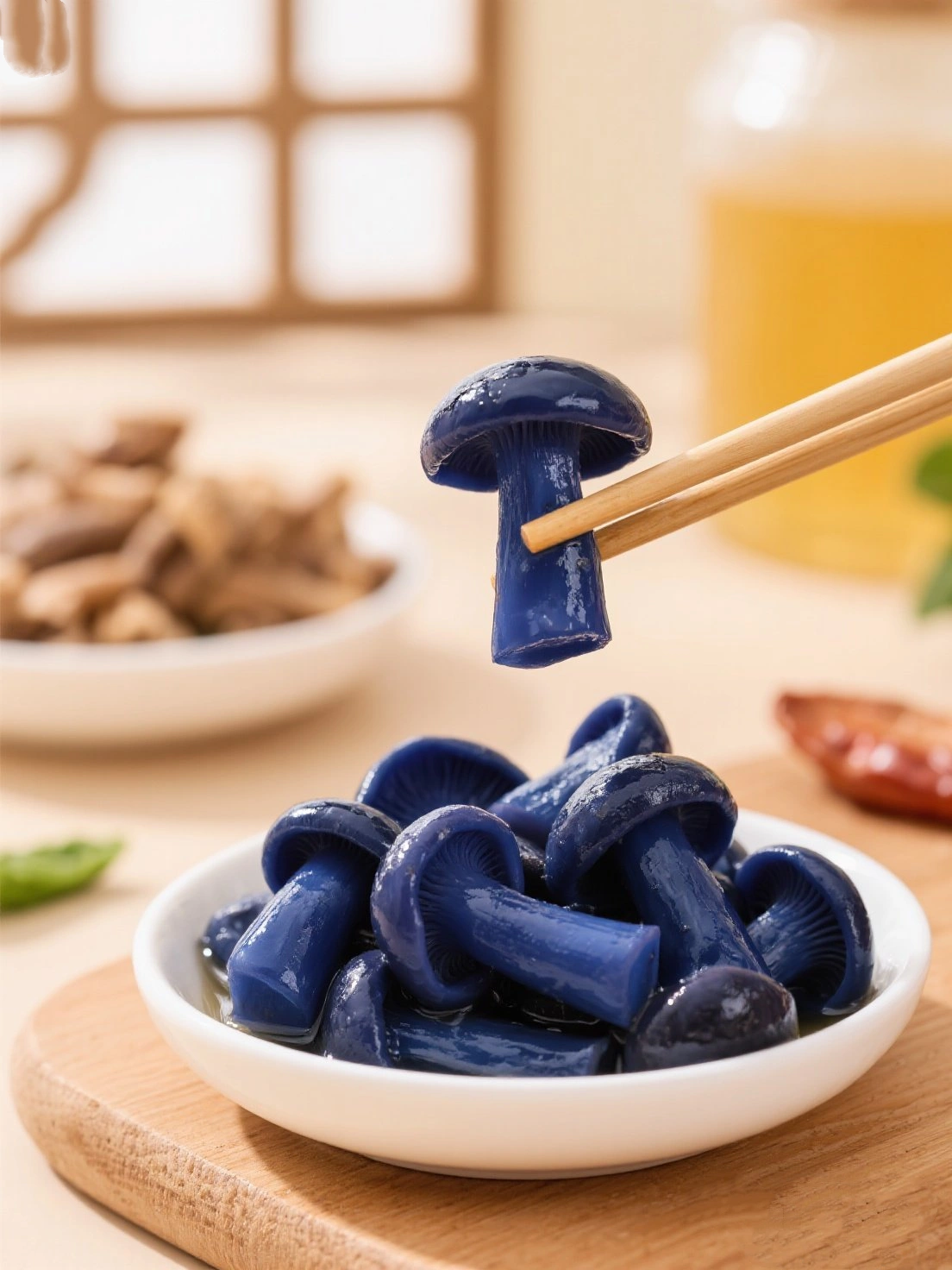The indigo milk cap (Lactarius indigo), known as 靛蓝乳菇 in Chinese, is one of nature's most striking blue mushrooms. This edible species is renowned for its vibrant blue coloration that bleeds indigo "milk" when cut or broken. The cap typically ranges from 5-15 cm (2-6 in) across, starting convex before becoming funnel-shaped with age.
This mushroom is easily identified by its deep indigo-blue color that fades to grayish-blue with age, and the distinctive latex "milk" that changes from blue to green upon exposure to air. The gills are crowded and blue, running slightly down the stem. Unlike many wild mushrooms, the indigo milk cap has a mild, pleasant odor and a slightly acrid taste when raw that mellows when cooked.
Found across eastern North America, East Asia, and Central America, this mycorrhizal fungus forms symbiotic relationships with various trees, particularly oaks and pines. While not as common as other edible mushrooms, it's prized by foragers for its unique color and culinary versatility.
